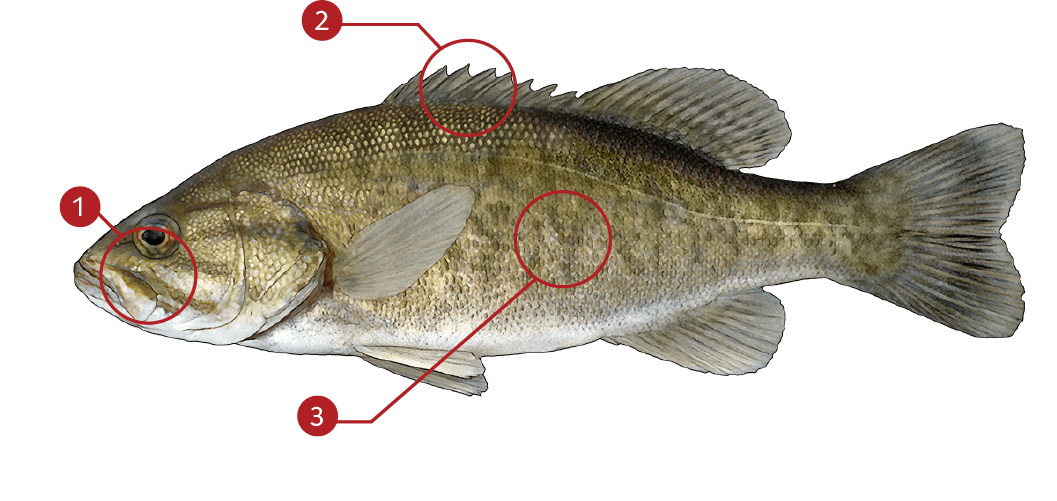SPOTTED BASS
How to identify a Spotted Bass
Many anglers who catch a spotted bass believe they have caught a largemouth bass, undoubtedly because the coloration is similar, both having a greenish hue and a broad stripe of diamonds or blotches along the midline of the body. The spotted bass, like all black basses except the largemouth, has scales on the base portion of the second dorsal fin, its first and second dorsal fin are clearly connected, and its upper jaw bone does not extend back to or beyond the rear edge of the eyes. The spotted bass is also often confused with the smallmouth bass, but lacks the vertical bars that are present on the sides of the body in the smallmouth. The spotted bass also has all black spots below the lateral line (the rear edges of certain scales are black) unlike either the largemouth or the smallmouth. Juveniles of the species resemble the young of smallmouth bass in having a broad band of orange at the base of the tail, followed by a broad black band and white edge. Because of the difficulty in recognizing the species, it is probable that record-size specimens of spotted bass have gone unnoticed.The smallmouth bass is known to hybridize in nature with the spotted bass, which could make identification of some specimens where both species are known to occur, even more difficult. Where depth permits, it appears that spotted bass usually stay deeper than smallmouths. In one lake in the TVA system in Tennessee, spotted bass have been taken at depths of up to 100 feet. Smallmouth bass, on the other hand, were not caught below 60 feet, and largemouth bass were always caught near the surface.
Where to catch Spotted Bass
Spotted bass can be found throughout the central and lower Mississippi Basin to the Gulf of Mexico (from Texas to the Florida panhandle), including Georgia, Alabama, Tennessee, Kentucky, and other nearby states where it occurs naturally or has been introduced. The Wichita spotted bass appears to be limited to the West Cache Creek, Oklahoma. The Alabama spotted bass has been introduced into California, however there are not substantial resident populations found there.
IDENTIFICATION

| |
Upper jaw extends to the middle of the eye |
| |
Thirteen to fifteen dorsal fin spins |
| |
Dark brown vertical bands |
TARGET AREAS
|
|
Acknowledgements: We thank TAKEMEFISHING.org (www.takemefishing.org), Wisconsin Department of Natural Resources for their contributions to these FISH FACTS.

